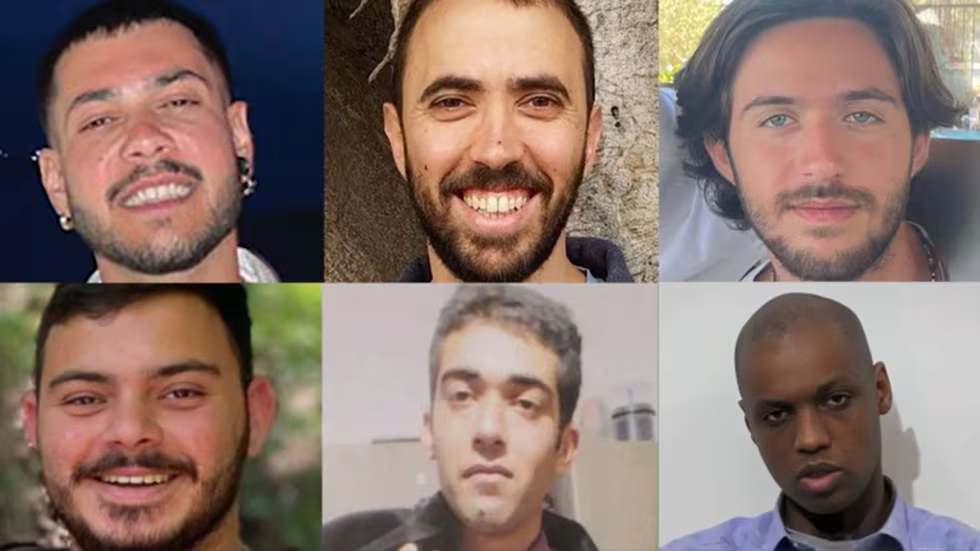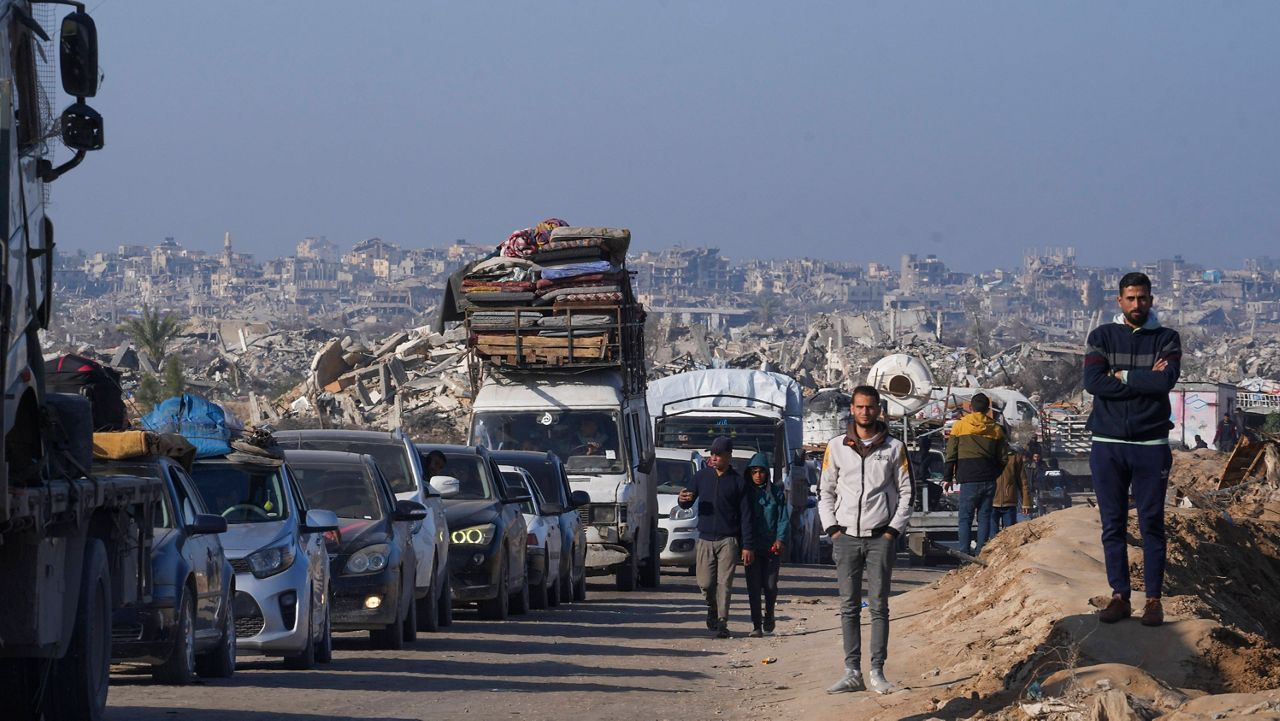The ongoing conflict between Israel and Hamas has seen multiple rounds of negotiations and temporary ceasefires aimed at securing the release of hostages. In a significant development, Hamas has announced that it will hand over six living Israeli hostages on Saturday and return the bodies of four others on Thursday.
This move is believed to be part of an arrangement that would allow the entry of mobile homes and construction equipment into Gaza, which has been devastated by the ongoing war.
This unexpected acceleration in hostage releases marks a critical moment in the current ceasefire phase, which was initially set to facilitate the exchange of hostages for Palestinian prisoners held in Israeli jails.
The Latest Developments in Hostage Negotiations
According to Hamas official Khalil al-Hayya, the decision to release the hostages ahead of the planned schedule is tied to Israel’s willingness to permit much-needed relief and construction materials into Gaza. The six hostages set to be freed include Eliya Cohen, Tal Shoham, Omer Shem Tov, Omer Wenkert, Hisham Al-Sayed, and Avera Mengistu.
Meanwhile, the bodies of four hostages, including members of the Bibas family, will be returned to Israel on Thursday. The Bibas family—comprising two young children and their mother—has become a symbol of the suffering endured by those taken captive during the conflict. The Israeli government has not yet confirmed their deaths, urging caution in disseminating any unverified information.
The ongoing hostage crisis began in October 2023, when Hamas launched an attack on Israel that resulted in the deaths of approximately 1,200 people and the capture of several hostages.
The abduction of Shiri Bibas and her two sons, Kfir and Ariel, was widely publicized, with heartbreaking footage showing Shiri clutching her children as armed militants took them away. Hamas has claimed that the Bibas family perished in an Israeli airstrike, but Israeli officials have yet to verify this claim.
Read : Freed Palestinians Burn Star of David T-Shirts Israel Forced Them to Wear
Under the terms of the ceasefire deal, Israel is expected to continue releasing Palestinian prisoners, including those serving life sentences for deadly attacks. Many of the detainees have been held without formal charges, leading to international criticism of Israel’s policies.
Read : Israel Reportedly Trying to Create Hamas-Free ‘Bubble’ Zones in Gaza
Additionally, Israel has agreed to release all women and children detained since the outbreak of the war as part of this exchange. However, the next phase of negotiations will be more complex, involving discussions on the potential release of additional hostages in exchange for a lasting ceasefire and an Israeli military withdrawal from Gaza.
Israel’s Response and the Humanitarian Crisis in Gaza
Prime Minister Benjamin Netanyahu’s government has faced increasing pressure to secure the release of the remaining hostages. The sight of previously freed hostages, many of whom were malnourished and physically weak, has intensified calls for immediate action.
Netanyahu has now agreed to allow mobile homes and construction equipment into Gaza, a long-standing demand of Hamas, in an effort to accelerate the hostage release process.
Hamas had previously threatened to delay further releases, citing Israel’s reluctance to permit essential aid and reconstruction materials into the war-torn enclave. In response, Israel began allowing rubble-removing equipment to enter Gaza on Tuesday.
Reports from the Associated Press confirmed that bulldozers were seen clearing debris near the Rafah border crossing, a significant step toward the eventual rebuilding of Gaza’s devastated infrastructure.
The humanitarian situation in Gaza remains dire. A recent report by the World Bank, the United Nations, and the European Union estimated that the cost of rebuilding Gaza would reach $53.2 billion.

The war has resulted in the deaths of more than 48,000 Palestinians, mostly women and children, according to Gaza’s Health Ministry. The conflict has also displaced hundreds of thousands, with many living in makeshift shelters and struggling to access basic necessities such as food, clean water, and medical supplies.
Despite the temporary ceasefire, the Israeli government remains firm in its stance that Hamas must be eliminated as a military and governing force in Gaza.
Meanwhile, the United States has proposed a controversial plan, attributed to former President Donald Trump, that suggests permanently relocating Gaza’s two million residents and redeveloping the territory.
This proposal has been widely rejected by Palestinians and the broader Arab world, with many residents vowing to resist any forced displacement. Egypt, a key regional player, is reportedly working on an alternative plan that focuses on reconstruction without the forced removal of Palestinian civilians.
The Challenges Ahead and the Future of the Ceasefire
The first phase of the ceasefire deal called for Hamas to release 33 Israeli hostages, eight of whom were believed to be dead. So far, 19 living Israeli hostages have been freed, alongside five Thai farmworkers who were also abducted.
Hamas-led militants are still believed to be holding around 60 captives, with roughly half of them presumed dead. The current ceasefire phase is set to continue until early March, but uncertainty looms over whether the fighting will resume once the deadline passes.
Negotiations for the second phase of the ceasefire are expected to be even more challenging. Hamas is likely to demand significant concessions, including a lasting ceasefire and a complete Israeli withdrawal from Gaza, in exchange for the release of the remaining hostages.
Israel, on the other hand, has been reluctant to commit to a full withdrawal, citing security concerns and its objective of dismantling Hamas’ military capabilities.

Public sentiment in Israel has grown increasingly divided. While many families of hostages are pushing for a continuation of negotiations and an extension of the ceasefire, others argue that military action is necessary to ensure long-term security.
The Israeli government’s handling of the hostage crisis has been a contentious issue, with critics accusing Netanyahu of prioritizing political survival over the well-being of the captives and their families.
On the Palestinian side, the release of prisoners has been met with mixed reactions. While families of detainees celebrate their loved ones’ return, reports have surfaced of former prisoners showing signs of malnutrition and abuse.
Some detainees have alleged mistreatment while in Israeli custody, further fueling tensions between the two sides. International human rights organizations have called for independent investigations into the treatment of prisoners on both sides.
As the situation continues to evolve, the coming weeks will be critical in determining the future of the ceasefire and the fate of the remaining hostages.
The humanitarian crisis in Gaza remains a pressing issue, and any long-term resolution will require addressing not only the immediate needs of those affected by the war but also the broader political and security challenges in the region. With both sides holding firm to their positions, achieving a lasting peace remains an elusive goal.
let’s enjoy few years on earth with peace and happiness….✍🏼🙏

